Accepted Scientific Name: Pelecyphora strobiliformis (Werderm.) Frič & Schelle ex Kreuz.
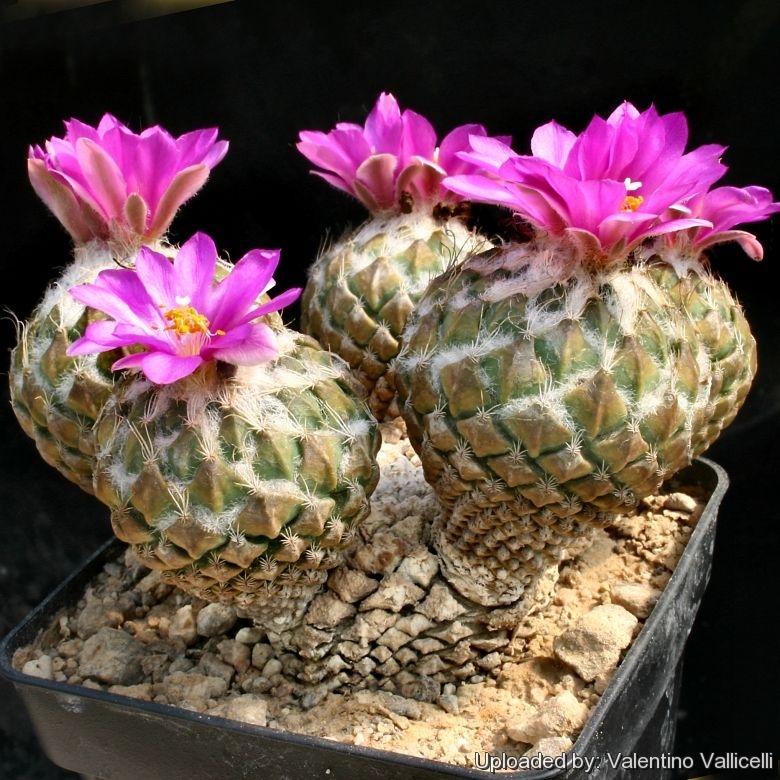
Encephalocarpus strobiliformis (Pelecyphora strobiliformis) Photo by: Valentino Vallicelli
A very slow growing, choice Mexican species, commonly called the ''Pinecone Cactus'' for its resemblance to a pine cone.
Origin and Habitat: Nuevo Leon, Tamaulipas, and San Luis Potosi, Mexico. The species has an estimated population size of more than 100,000 individuals. It reproduces well.
Altitude: Up to 1600-1900 metres above sea level.
Habitat: This species is found in typical Chihuahuan Desert, among outcrops of calcareous rocks together with Turbinicarpus schmiedickeanusSN|12648]]SN|12648]], and Mammillaria albicomaSN|23716]]SN|23716]]. The stems are normally flush and well camouflaged with the soil surface resembling limestone chips in shape, colour, and texture, rendering the plants extremely cryptic. They are greyish-green in colour, sometimes taking on a yellowish tint with age. These cacti are difficult to spot in their natural habitat. When they are found, it is usually due to their pinkish flowers. In times of severe drought, the whole above-ground portion of these plants can shrink and be covered by rock fragments, but the taproot remains alive. Many exist as only small, isolated populations, and there are no major threats to this species. There is some illegal collection.
Synonyms:
See all synonyms of Pelecyphora strobiliformis
Common Names include:
ENGLISH: Pinecone Cactus
SPANISH (Español): Peyotillo, Peyote
Description: Encephalocarpus strobiliformis, formerly known as Pelecyphora strobiliformisSN|1558]]SN|1545]], is a slow-growing geophytic succulent, with solitary or multiple stems barely rising above ground level.
Stem: Spherical to flattened globose, greenish to yellowish-green, somewhat resembling a pine cone and vaguely reminiscent of Ariocarpus, 2-4 cm tall, 4 to 6 cm in diameter (or more, in cultivation).
Tubercles: Spirally arranged overlapping. They are scale-like, imbricated, and closely applied to each other, flat and convex on the inside and carinate on the outside. The base is woolly.
Areoles and spines: Dimorphic, with the spines-producing portion on the outer part and the flower-producing portion at the base of the tubercle. Small, oval, woolly on the new growth in the inner portion of the pointed tubercles apex. While the new growth continues, these areoles produce a few short, more or less pectinate spines. With age, the areoles disappear and the oldest tubercles have a bare, blunter apex.
Root: Large, spindle shaped, compressed taproot.
Flowers: Borne at the base of young tubercles near the top of the plant, diurnal, bell-shaped or funnelform, brilliant, pink to reddish-purple, about 3 cm long, with greenish outer segments and incised or curly inner segments.
Remarks: Although adult specimens of Encephalocarpus strobiliformis bear scale-like tubercles, which are very different from the laterally compressed tubercles of Pelecyphora aselliformisSN|855]]SN|855]], all the other characteristics clearly show that they are congeneric, while a third species, Pelecyphora valdezianaSN|1545]]SN|1558]], does not seem to clearly belong to this genus, and it is now brought into synonymy with Turbinicarpus.
Subspecies, varieties, forms and cultivars of plants belonging to the Pelecyphora strobiliformis group
Bibliography: Major references and further lectures
1) Edward Anderson “The Cactus family” Timber Press, Incorporated, 2001
2) James Cullen, Sabina G. Knees, H. Suzanne Cubey "The European Garden Flora Flowering Plants: A Manual for the Identification of Plants Cultivated in Europe, Both Out-of-Doors and Under Glass" Cambridge University Press, 11/Aug/2011
3) David R Hunt; Nigel P Taylor; Graham Charles; International Cactaceae Systematics Group. "The New Cactus Lexicon" dh books, 2006
4) N. L. Britton, J. N. Rose “The Cactaceae. Descriptions and Illustrations of Plants of the Cactus Family.” Volume 4, The Carnegie Institution of Washington, Washington 1923, page. 41
5) Curt Backeberg “Die Cactaceae: Handbuch der Kakteenkunde” Gustav Fischer Verlag, Stuttgart New York 1982–1985
6) Fitz Maurice, B & Fitz Maurice, W.A. 2013. Pelecyphora strobiliformis. The IUCN Red List of Threatened Species. Version 2015.1. <www.iucnredlist.org>. Downloaded on 21 June 2015.
 The stems are flush and well camouflaged with the soil surface resembling limestone chips in shape, colour, and texture (Pelecyphora strobiliformis) Photo by: Agócs György
The stems are flush and well camouflaged with the soil surface resembling limestone chips in shape, colour, and texture (Pelecyphora strobiliformis) Photo by: Agócs György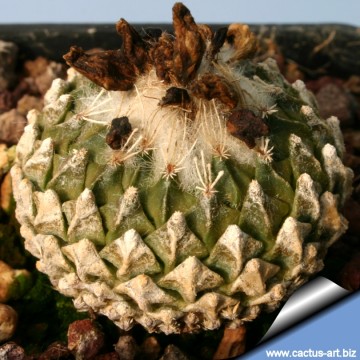 Encephalocarpus strobiliformis (Pelecyphora strobiliformis) Photo by: Cactus Art
Encephalocarpus strobiliformis (Pelecyphora strobiliformis) Photo by: Cactus Art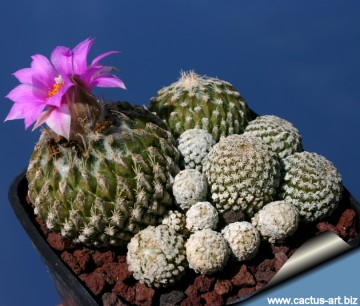 Mature and juvenile plants toghether. (Pelecyphora strobiliformis) Photo by: Cactus Art
Mature and juvenile plants toghether. (Pelecyphora strobiliformis) Photo by: Cactus Art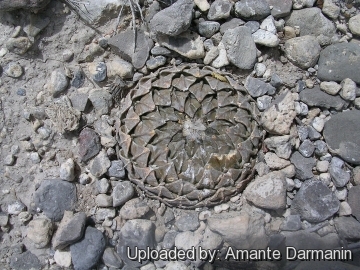 Encephalocarpus strobiliformis, La Perdida, Tamaulipas.These cacti are difficult to spot in their natural habitat. (Pelecyphora strobiliformis) Photo by: Amante Darmanin
Encephalocarpus strobiliformis, La Perdida, Tamaulipas.These cacti are difficult to spot in their natural habitat. (Pelecyphora strobiliformis) Photo by: Amante Darmanin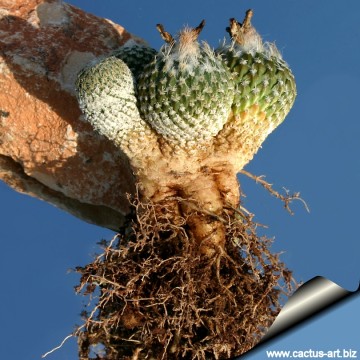 Encephalocarpus strobiliformis (Pelecyphora strobiliformis) Photo by: Cactus Art
Encephalocarpus strobiliformis (Pelecyphora strobiliformis) Photo by: Cactus Art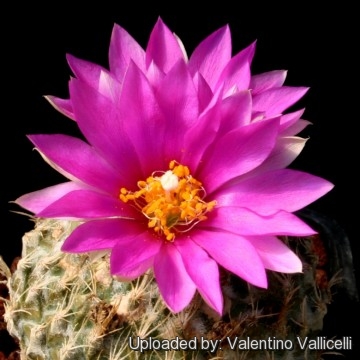 Encephalocarpus strobiliformis (Pelecyphora strobiliformis) Photo by: Valentino Vallicelli
Encephalocarpus strobiliformis (Pelecyphora strobiliformis) Photo by: Valentino Vallicelli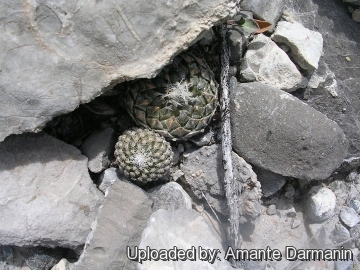 Encephalocarpus strobiliformis, La Perdida, Tamaulipas. (Pelecyphora strobiliformis) Photo by: Amante Darmanin
Encephalocarpus strobiliformis, La Perdida, Tamaulipas. (Pelecyphora strobiliformis) Photo by: Amante Darmanin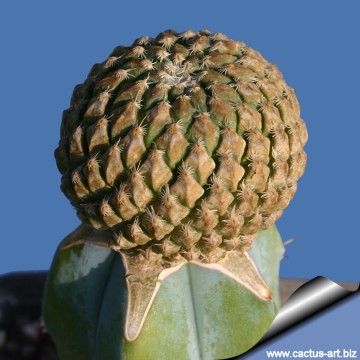 In cultivation they are often grafted on stronger species, called the stock, that can be any number of different columnar cacti. (Pelecyphora strobiliformis) Photo by: Cactus Art
In cultivation they are often grafted on stronger species, called the stock, that can be any number of different columnar cacti. (Pelecyphora strobiliformis) Photo by: Cactus ArtCultivation and Propagation: It’s a fairly easy species to cultivate, but very slow-growing. It needs a very well drained soil, and requires strong sun to part sun to develop good spinal growth. Waterings should be rather infrequent, to keep the plant compact and avoid it becoming excessively elongated and unnatural in appearance. Keep dry in winter or when night-time temperatures remain below 10° C. It is hardy to -4°C for a short period. Assure good ventilation.
Propagation: Old plants put forth basal shoots, but growth is slow. Propagation is mainly by seed.
Your Photos
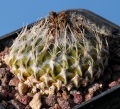
by Valentino Vallicelli

by Valentino Vallicelli
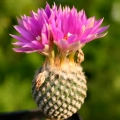
by Valentino Vallicelli
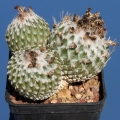
by Valentino Vallicelli
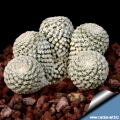
by Cactus Art























